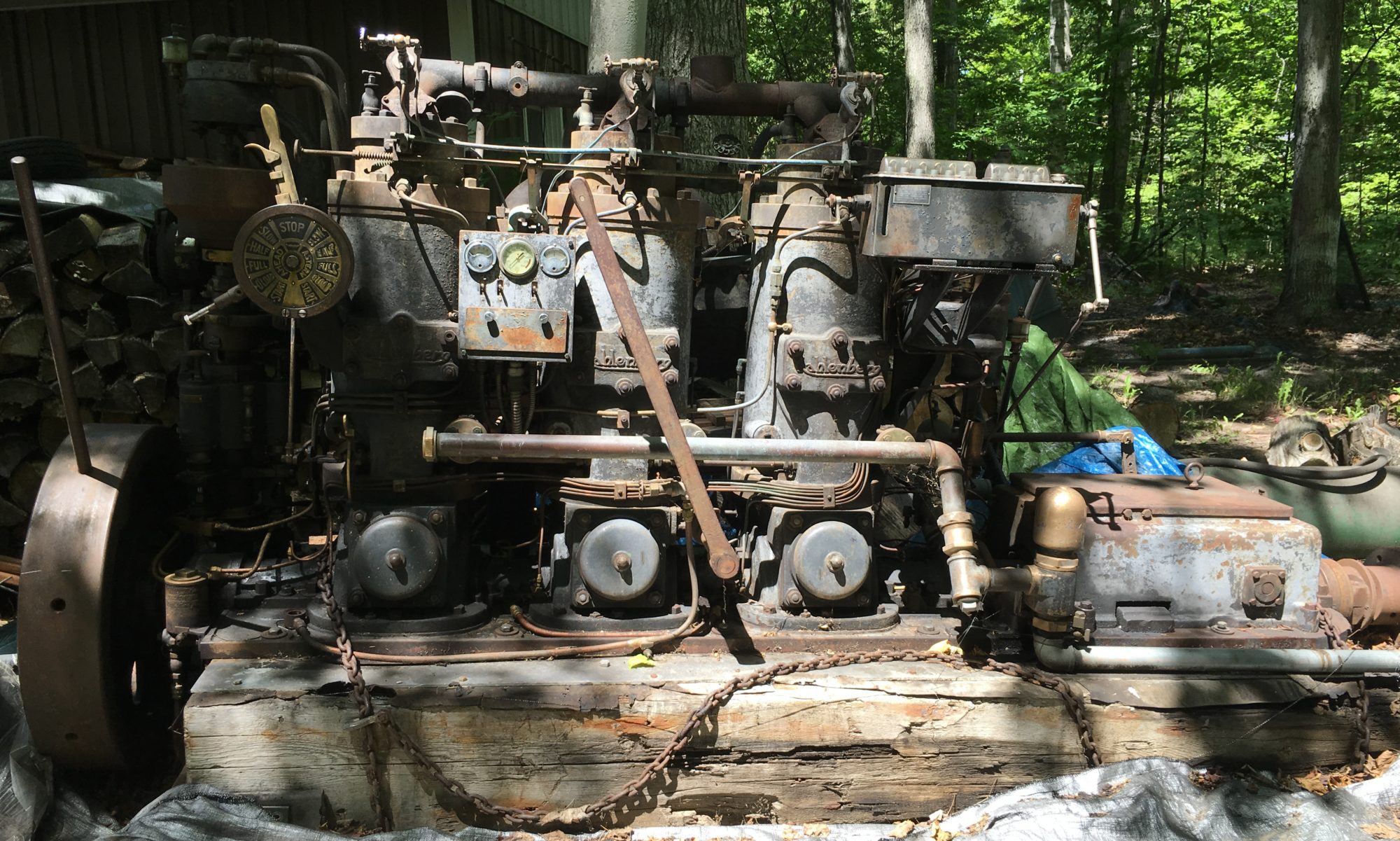A few months back I was debating whether to paint the engine or let it stay in its vintage patina. I was leaning towards keeping it as-is but changed my mind. There was a lot of peeling paint of various generations plus blobs of other paint most likely from the interior of the fish tug. And quite a bit of rust. As a (hopefully) running engine going forward, it’s going to get coated in oil anyway. Regardless, I’m committed now. The main color is “cast coat iron” with a darker machinery gray for various other components like the oilers, flyweight housing, heads and maybe a few other things. I also decided to not attempt painting the foundation but might change my mind on that one.



One of the subassemblies I worked on recently was the dial control. This runs from the throttle/timing control back to the air starter valve. Surprisingly, the timing shaft and control cam are serialized. Overall, it was in pretty good condition. This assembly is also interesting because it is obviously designed later than the engine. There were at least three types of control systems available. This one is the “C” family so probably the third generation. It includes cap screws, flange nuts and zirk fittings, things not seen anywhere else on the engine.




The air intakes were up next. They were disassembled and given a thorough cleaning before painting. These are interesting mechanisms. Being a valveless two-stroke engine, intake air is drawn in through the crankcase. The air intake valves are similar to a modern reed block. In this case the reeds are round brass disks. The disks are held closed by a series of coil springs. Vacuum caused by the piston moving upward pulls the reeds open to draw in air. I’m not sure how the engineers arrived at using disks but it is clever and simple. It is also very easy to work on. There are two of these per cylinder, one on each side of the cylinder base. Once again I was lucky to find the intakes in good condition. There were a couple of springs to replace but the brass reeds were fine.





Currently on the bench is the air starter distributor. This times the compressed air to each of the cylinders for starting. The air distributor has one of the few ball bearings in the engine. Unfortunately the bearing is in rough shape from rust. I did a search based on the information on the bearing and surprisingly the company is still in business (Aetna Bearing). I ordered a replacement for $37 direct from the manufacturer.


I still have quite a bit of cleaning and painting including a few large items like the exhaust manifold and transmission case. The weather has been very conducive to painting so I’m trying to get as much done this month as possible. I’m not trying to strip down to bare metal but to just get the loose paint off and smooth it out a bit. Below are the intake port inspection plates and the only castings with the “Kahlenberg” script.

I visited the “Albany Pioneer Days” threshing show this past weekend. I had heard there was a Kahlenberg on display and sure enough:




This is a B-series engine which has a 10″ bore. Mine is a A-series with 8.5″ bore but otherwise a lot of common parts. I got to see it run and talk with the curator. Another good source for information! It’s very enjoyable to talk with other Kahlenberg people.





